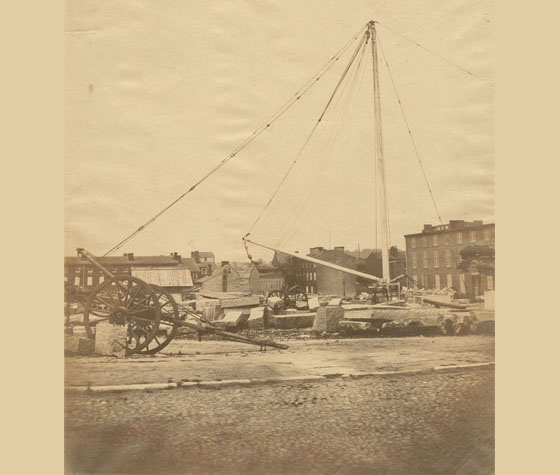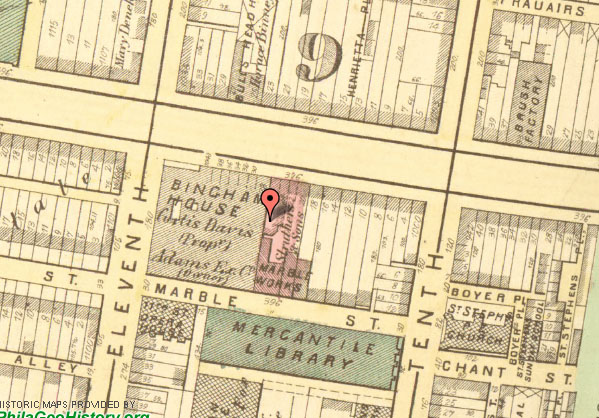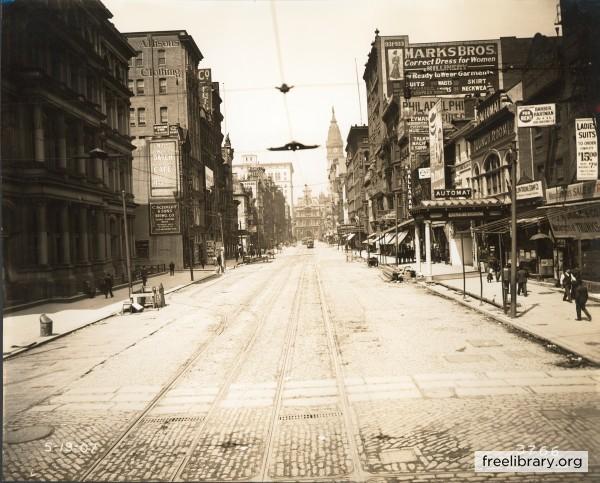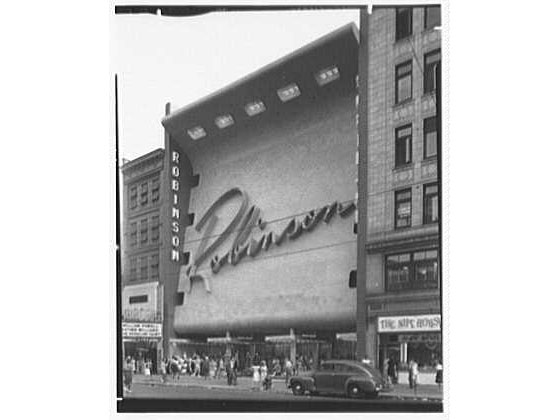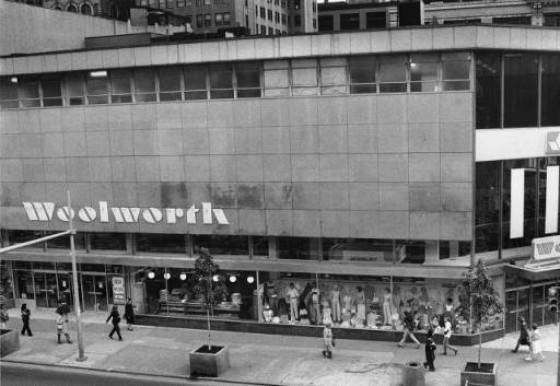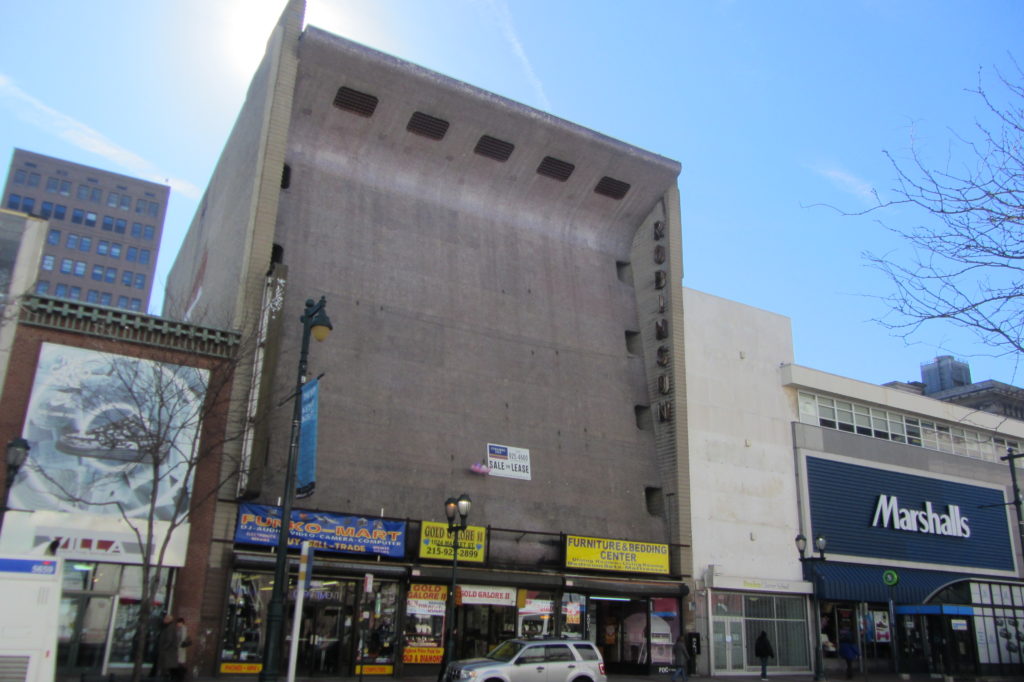Today, Market East is a haven for pawn-brokers, check-cashing stands and purveyors of brand name knockoffs. The south side of the 1000 block offers one such decidedly uninspiring mix of storefronts. Simultaneously, this stretch is a reminder of a time when Market Street was one of the nation’s top retail destinations. The odd structure listed as 1020 Market St. is a perfect demonstration. This strange building, whose edifice looks not unlike a gargantuan toboggan leaning against a dumpster, hints at a brighter time in Market Street’s retail history. Actually, a reflection on the changes at this location suggests that most times in its retail history were brighter than this one. So says the 1858 photo below, taken from the Library Company, which shows the location in its earliest incarnation as a marble yard.
In fact, according to the text by Edwin Troxell Freedley called Philadelphia and Its Manufactures, “the ground now occupied by Messrs. Struthers & Son, on Market Street above Tenth, has been used uninterruptedly as a Marble Yard since 1798.” The importance of the operation by Struthers & Sons is attested to in the image shown below from G.M. Hopkins 1875 Philadelphia Atlas. This shows that historically, Ludlow Street, just south of Market, was once dubbed Marble Street in reference to this booming business.
The success of the Struthers company as an early industrial firm in Philadelphia is evidenced to by the many historically important structures that were built using Struthers marble, including the Merchants’ Exchange and the Pennsylvania and Reading Railroad buildings. But by the turn of the century, the face of Market Street had changed significantly. Major department stores and retail chains were becoming a dominant presence in the downtown area. According to the 1916 Pennsylvania Bureau of Foods’ Monthly Bulletin, a Woolworth’s was now listed at 1020 Market Street. The photo below, taken from the Department of Records, shows the 1000 block of Market as it appeared in 1907.
It was in 1946 that the structure would take on its odd present day form as one of eleven uniquely conceptualized modern storefronts for the Robinson-Grayson chain of ‘budget womenswear.’ According to Field Notes, this would be the first multi-structure commission for architect Victor Gruen, who had only a few years prior fled his native Austria with the onset of WWII. Gruen would go on to be nothing less than the pioneer of the shopping-mall concept in the United States. The 1946 photo below, of the Robinson department store in full flower, is taken from Philadelphia Speaks.
Given Gruen’s role both in the design of the Robinson building and the shopping-mall, it is perhaps appropriate that the very year the Gallery at Market East opened across the street is also the year that a new occupant moved to 1020 Market. Homesick after a 30-year absence, Woolworth’s returned to the spot in 1977. The 11th & Market entrance is shown here below in a photo taken from the Temple University Libraries collection.
Today, even the second Woolworth’s seems like glory days. The Robinson building remains fully intact as does the connecting structure that, along with it, comprised Woolworth’s. The latter, as shown in the present day photo below, is now a Marshall’s, while the former is shared by a discount furniture store, a cash-for-gold bodega and, most importantly, the Funko-Mart, which in addition to selling electronics, also sells the funk.
–David Tomar

